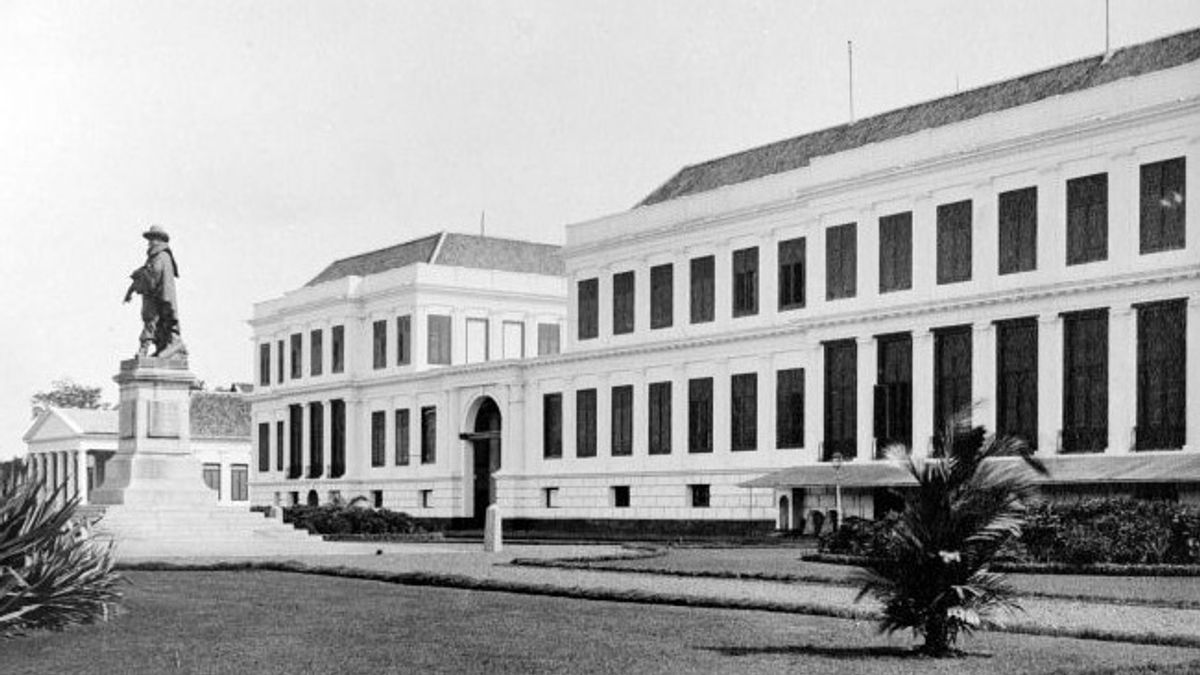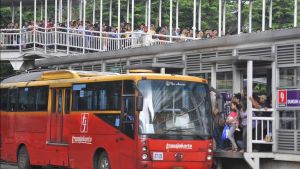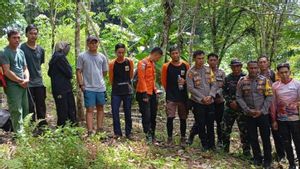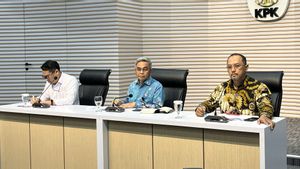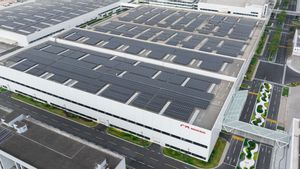JAKARTA History today, 214 years ago, March 7, 1809, the Daendels White Palace (De Witte Huis) began to be built by the colonial government of the Dutch East Indies. The development marked the seriousness of the Governor General of the Dutch East Indies, Herman Willem Daendels, to build a new government center in Weltevreden (now: the area around Lapangan Banteng).
Previously, the Netherlands made Oud Batavia (Old Batavia) the center of Dutch East Indies government. The location was considered strategic until then the disease outbreak became a frightening scourge in Batavia Lama.
Batavia City (now: Jakarta) has many portraits of Dutch colonial greed. The presence of various industries to large-scale land clearing became the cause. The colonial chaos from the era of the Dutch trading airline VOC to the colonial government of the Dutch East Indies invited disease outbreaks:floation and malaria.
The outbreak that emerged from the damaged environment made the death rate of the Dutch in Batavia increase sharply. The high death rate then changed the face of Batavia, which was formerly dubbed the Queen of the East to a Cemetery from the East.
The Dutch also perpetuated all kinds of teachings. However, most of them ended in failure. In the Daendels administration, let alone. Daendels wants the center of government to be moved immediately. He cannot run the government from a sick environment.
He also inflamed the relocation of the Dutch East Indies capital. The option was taken to reduce the death toll in Batavia. He started the move by destroying Batavia Lama, including Kasteel Batavia.
After that, the remains of the Old Batavia debris were reused to build a new government center in Weltevreden. He then instructed his staff to build buildings, military facilities, entertainment, and comfortable housing for Europeans.
In the early 19th century, living conditions in the old city of Batavia surrounded by a fort were very unhealthy. The death rate was very high, and Batavia earned the nickname Grave in the East. In this regard, Daendels planned a new city which he called Weltevreden, from a plantation in the area of the same name. The project site was linked to the old Batavia City using existing infrastructure, both roads and canals.
He has also planned a new government building to replace the old VOC fort. Weltevreden is expected to become the center of the new government of the Dutch East Indies. Symbolically, the government building was partially built using bricks taken from the rubble of a fort or wall that once protected the city of Batavia," Cor Passhier explained, in the book Past in the present: Architecture in Indonesia (2009).
No one was able to reject Daendels' plan. All kinds of development were carried out in Weltevreden. Even with the development pattern one by one. Because, the colonial government at that time was in trouble with funds.
Even if there are buildings that are forced to be built quickly, then the building is the Daendels White Palace (now known as the AA Maramis Building, Ministry of Finance of the Republic of Indonesia). The palace is predicted to replace Kasteel Batavia as the residence and office of the Governor General of the Dutch East Indies.
The colonial government of the Dutch East Indies stepped on the gas. The construction of the White Palace began on March 7, 1809. The owner of the power appointed Colonel JC Schulze to be the architect of the White Palace. Schulze's appointment was none other than because he was one of the famous architects of his time.
He built the White Palace with a touch of Empire Style style. Even though Daendels himself never lived in the palace. This is because the building was only completed in 1828. Meanwhile, Daendels as Governor General ended in 1811.
On March 7, 1809, it was decided to build a new palace for the governor general on the east side of the parade (now: Banteng Square). despite the financial situation, the construction was carried out on a large scale. The main building is planned for the governor general, while others will be used for government offices.
"It seems that at that time people still couldn't let go of the old thought election, that important offices had to be in a complex with the palace, just like Kasteel in Pasar Ikan (Kota Tua area). Furthermore, the complex also includes lodging places for officials, horse istals, and so on," said Siswadi in the book Batavia: The story of Jakarta Tempo Doeloe (1988).
The English, Chinese, Japanese, Arabic, and French versions are automatically generated by the AI. So there may still be inaccuracies in translating, please always see Indonesian as our main language. (system supported by DigitalSiber.id)
